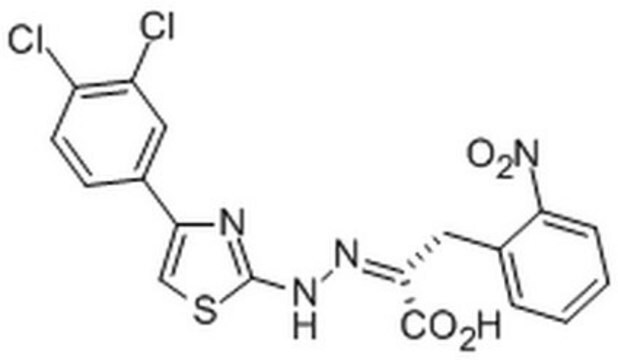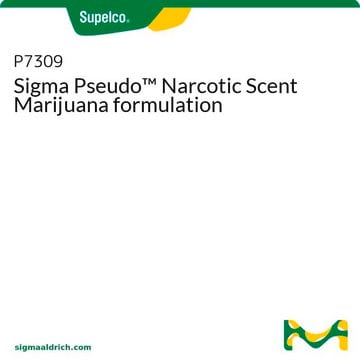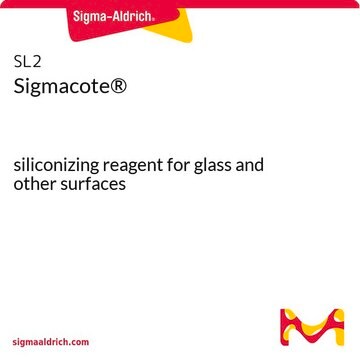324517
eIF4E/eIF4G Interaction Inhibitor, 4EGI-1
The eIF4E/eIF4G Interaction Inhibitor, 4EGI-1, also referenced under CAS 315706-13-9, controls the biological activity of eIF4E/eIF4G interaction. This small molecule/inhibitor is primarily used for Phosphorylation & Dephosphorylation applications.
Sinonimo/i:
eIF4E/eIF4G Interaction Inhibitor, 4EGI-1, 2-((4-(3,4-Dichlorophenyl)-thiazol-2-ylhydrazono)-3-(2-nitrophenyl))propionic acid, eIF4F Inhibitor I
About This Item
Prodotti consigliati
Livello qualitativo
Saggio
≥98% (sum of two isomers, HPLC)
Forma fisica
solid
Produttore/marchio commerciale
Calbiochem®
Condizioni di stoccaggio
OK to freeze
protect from light
Colore
yellow
Solubilità
DMSO: 100 mg/mL
Condizioni di spedizione
ambient
Temperatura di conservazione
2-8°C
InChI
1S/C18H12Cl2N4O4S/c19-12-6-5-10(7-13(12)20)15-9-29-18(21-15)23-22-14(17(25)26)8-11-3-1-2-4-16(11)24(27)28/h1-7,9H,8H2,(H,21,23)(H,25,26)/b22-14+
KFRKRECSIYXARE-HYARGMPZSA-N
Descrizione generale
Confezionamento
Attenzione
Ricostituzione
Altre note
Note legali
Codice della classe di stoccaggio
11 - Combustible Solids
Classe di pericolosità dell'acqua (WGK)
WGK 3
Punto d’infiammabilità (°F)
677.1 °F - (calculated)
Punto d’infiammabilità (°C)
358.4 °C - (calculated)
Certificati d'analisi (COA)
Cerca il Certificati d'analisi (COA) digitando il numero di lotto/batch corrispondente. I numeri di lotto o di batch sono stampati sull'etichetta dei prodotti dopo la parola ‘Lotto’ o ‘Batch’.
Possiedi già questo prodotto?
I documenti relativi ai prodotti acquistati recentemente sono disponibili nell’Archivio dei documenti.
Il team dei nostri ricercatori vanta grande esperienza in tutte le aree della ricerca quali Life Science, scienza dei materiali, sintesi chimica, cromatografia, discipline analitiche, ecc..
Contatta l'Assistenza Tecnica.







